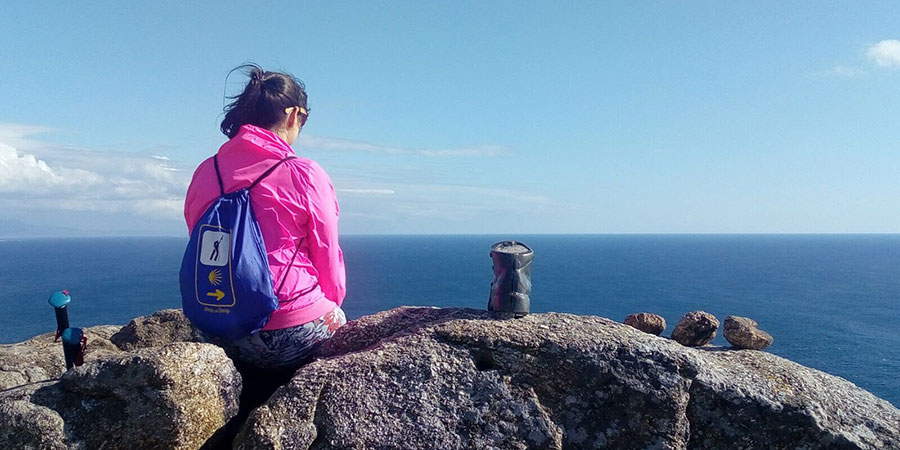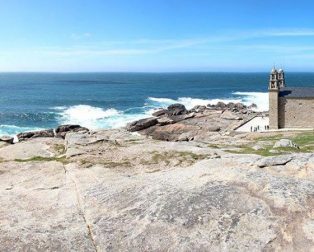The Finisterre Camino has had a magical appeal for pilgrims since medieval times. Having arrived in Santiago de Compostela after walking for many weeks across Europe, they would continue their journey to Cape Fisterra.
Cape Fisterra was once believed to be the last place on Earth, the edge of the known World, Finis Terrae. Many would also continue to Muxia to pay their respects to the Virxe da Barca and her sanctuary perched over mythical rocks carved by the Atlantic Ocean.
The Finisterre Camino still remains one of the pilgrims’ favourite Camino routes today and it is possible to walk both from Santiago or start your journey from Muxia or Fisterra and walk towards Santiago instead. Whether you are walking to or from Santiago, these are some of the places and traditions, old and new, you shouldn’t miss on the Finisterre Camino:
Pontemaceira medieval bridge
Feel like a medieval pilgrim as you cross the 14th-century bridge over the Tambre River in the pretty little hamlet of Pontemaceira.

Pazo do Coton
The arches of the 18th-century stately home Pazo de Coton are an iconic image for pilgrims on this Camino route.
A swim in Praia Langosteira
The Camino to Fisterra and Muxia has many rituals passed down from pilgrim to pilgrim over the centuries. One of them is going for a swim in Langosteira Beach, which used to be considered a purification ritual marking the end of the Camino journey.
Get your Fisterrana
Modern-day pilgrims to Fisterra can now get a pilgrim certificate at the local pilgrim hostel, the Finisterrana Certificate. The Chapel of Holy Christ in the Church of Santa Maria das Areas has been a place of worship for pilgrims for many generations and is a must-visit in town before you head to collect your certificate.

Watch the sunset at Cape Fisterra
Watching the sun set and disappear over the Atlantic Ocean by the iconic lighthouse at Cape Fisterra is probably one of the oldest traditions associated with the Finisterre Camino. It is believed the area was the location of the Ara Solis, an altar dedicated to the mighty sun and its magic powers; and not only pre Christian locals but also the Roman invaders were in awe of Fisterra’s majestic sunsets.
Seafood
Foodie pilgrims in the region will relish the opportunity to taste some of the best seafood in Europe. Gonzalo from El Rey de las Mariscadas (the King of Seafood) assures us he offers the best in town, to be savoured from a privileged location overlooking Langosteira Beach.

Virxe da Barca Sanctuary and magic stones
Today’s Virxe da Barca sanctuary is a Baroque building dating back to the 18th century but the original chapel would have dated to back to medieval times. The place is a fascinating mix of religious and pagan traditions, best illustrated by the importance of its famous ‘magic stones’, as important a pilgrimage as the chapel of the Virxe da Barca itself.
According to legend, the Virgin Mary travelled on a stone boat to Muxia to help St James spread the gospel among the unruly locals. You’ll find not only the ‘boat stone’ but also the ‘back stone’ (pedra dos cadris), and you will have to walk under it nine times to cure all your back ailments.
For more information about the Finisterre Camino or to book your trip, please don’t hesitate to contact us.





